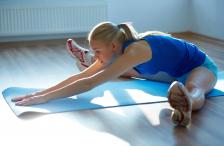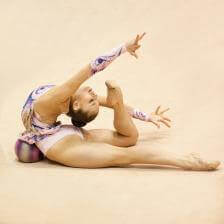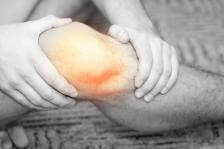Top 10 Stretching Mistakes (Part 1)
In Part 1 of this two-part series on stretching, Get-Fit Guy explains the 5 stretching mistakes that may be harming your body and increasing the chances for injury. Plus, you’ll learn when to stretch and how to stretch for ultimate flexibility and mobility.

There are many varied opinions when it comes to the best time to stretch, which stretches are best, how long to stretch, or even if you should be stretching at all. I hinted at some of these issues in the episode Does Yoga Burn Calories, in which I dispelled the myth that you actually burn fat with the stretching you do in yoga class.
In the episode How to Get More Flexible, you learn that traditional stretches such as standing and reaching for your toes are really not an ideal way to truly improve your flexibility, your range-of-motion, or your mobility.
In today’s episode, which is Part 1 of a series on stretching, you’re going to learn everything else you need to know about stretching – including the top 5 stretching mistakes, plus when to stretch and how to stretch.
Mistake #1: Stretching Knots
In a recent article I wrote about mobility, I pointed out the fact that when you’re exercising frequently, your muscle fibers can easily get cross-linked, knotted, and stuck to one another in a pattern called an adhesion. Now think of these adhesions, or knots in your muscle, like a rope with a knot in the middle. If you pull on both ends of the rope, what happens? The knot gets tighter, and more difficult to untie! This is how stretching can make things worse if you have adhesions, knots, and other tissue issues.

I personally used to get in a car and drive to a massage therapist every single week until I learned how to do my own therapy with a golf ball, a hard, ridged foam roller I have a love-hate relationship with (a Rumble Roller), a series of lacrosse balls strung together (a Myorope) and rolling-pin like device called a MuscleTrac. Now I only need to see a massge therapist when I’ve run into a big knot that I simply can’t fix myself, which only happens about 1% of the time.
Mistake #2: Stretching with Poor Posture

The fact is, many people do leg and arm stretches with poor posture – meaning they simply use their back or neck to strain into the position they want to get to – which results in undue stress on the spine and the vertebra, and eventual back and neck pain, headaches, and muscle strains.
Just like when you’re lifting weights, running, swimming, or riding a bicycle, you should never be hunched over with poor posture when you’re stretching. Instead, you should be alert with a straight back, tight abs, and an activated butt. One of my favorite ways to practice this type of posture is by following the method outlined in the book Foundation by Dr. Eric Goodman.
Mistake #3: Stretching Imbalances

The psoas is very easy to stretch, and in just a moment I’ll tell you how, but the problem is that most people spend way too much time stretching the back of the legs and wind up with weak and noodle-like hamstrings with a very tight psoas – resulting in back pain, a shortened stride, and poor posture.
So how do you stretch the psoas? It’s easy! Stand up and lunge with one foot forward and one foot back. Now, bring both your arms overhead. Finally, lean away from the leg that is out behind you. If you do this right, you’ll feel the stretch in the front of the leg that is extended behind you, up near your groin.
Mistake #4: Stretching Stressed
One of the first things you’ll learn when you visit a yoga class is to engage in the type of deep diaphragmatic breathing I describe in the episode How to Breathe the Right Way. This is because if you breath in a stressed, shallow way while doing yoga or you grit your teeth while stretching, you wind up stretching a muscle that is tight. And this is just like trying to stretch a rubber band that just doesn’t want to stretch – you risk straining, spraining, or tearing that rubber band!
Although stretching while stressed is a bad idea, stretching is in fact a great way to reduce stress! So when you actually do stretch, be sure to take deep, relaxed, focused breaths through your nose and out through slightly pursed lips or through your nose. If you find yourself breathing shallow or breathing from the chest, then simply stop, close your eyes, and focus on relaxing and letting all your cares go away. Then keep stretching.
Mistake #5: Stretching Through Pain

While light stretching can indeed improve blood flow to an injured muscle or joint, which can certainly assist with healing, you’d be surprised at how small of a stretch is actually necessary to induce this healing response. For example, stretching the ligaments and muscles around the knee can involve something as simple as going for a light walk, a very easy bike ride, or some low-impact marching in place. It does not require you to get into some kind of a yogi-esque position of pulling your heel all the way up to your butt until you feel shooting pain in your leg!
So while it’s OK to stretch an injured area, just remember not to stretch through pain, and remember that if a muscle is even moving at all, it is stretching – and sometimes that’s all you need!
Next week, you’ll learn the next 5 stretching mistakes. But in the meantime, if you have more questions about these first 5 stretching mistakes, then post them below or at Facebook GetFitGuy.
Woman stretching, man bending, and other images courtesy of Shutterstock.






